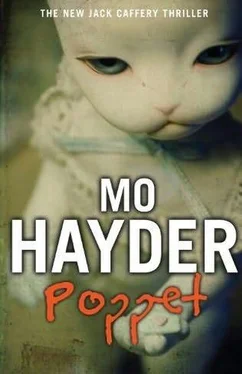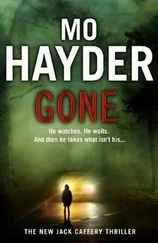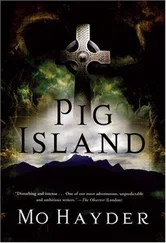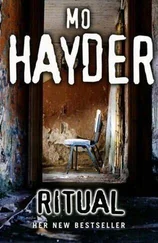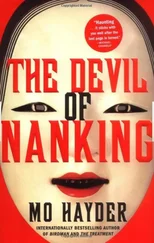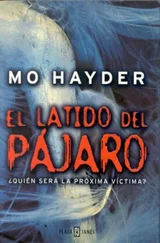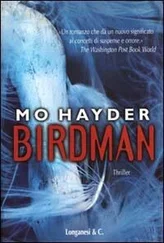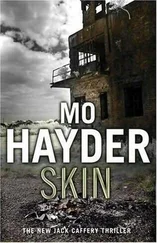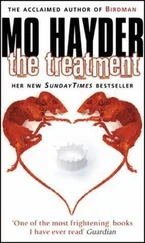CAFFERY STARTS TO compose a message to Flea. He gets twenty words in then changes his mind, puts the phone in his pocket and walks around the garden impatiently like something that’s about to explode. This is like the man who keeps hitting himself in the face over and over. Still hoping Flea’ll change her mind? What a joke that is. Whatever is stopping her isn’t going to go away. His best bet is to get to the bottom of the Isaac Handel case, then take a long breath and move on to alternatives for closing the Misty Kitson case.
Eventually, for no particular reason except that he can’t think what else to do with them, he re-buries Misty’s clothes in the garden. Covers them with soil. He doesn’t want to get the holdall with the dolls out of the car, it’s the last thing he wants, but he does it anyway. The one place he can close off from the rest of the house so the smell doesn’t permeate everywhere is the utility room, so he carries them in there. Then he showers and changes into an old T-shirt and sweatpants. He spends an hour printing anything he can find about voodoo dolls, then pours a large Scotch and carries the printouts through into the utility room. He puts his nitriles back on and starts picking through the dolls.
They make an ugly hotchpotch of textures – Handel seems to have used all manner of materials, from patchwork squares, to raw sheep wool, to glazed clay, to small pieces of stick or wood. Anything he can scavenge. They are crude and unsettling – having them here is like having extra people in the house.
The printouts tell him the notion of a voodoo doll is a popular myth. There’s almost nothing to connect it to the Haitian strand of voodoo; the only place the dolls seem to surface is in New Orleans, where voodoo has undergone a kind of Americanized renaissance for the tourist industry. Nevertheless, in the popularized fiction of voodoo – the sort of thing a fourteen-year-old boy might read – voodoo dolls not only exist, they are objects of terror. They obey a fixed set of rules, they can be used to control the humans they represent.
Caffery fumbles two of the dolls to one side. Both are made from leather – human outlines stitched crudely together with something that looks, to Caffery’s uneducated eye, like catgut from a stringed instrument. When Isaac came out of the house after the murders he was clutching two dolls. Penny only glimpsed them, and doesn’t know what happened to them afterwards, but she maintains she’d seen them before and they were the ones which represented Graham and Louise Handel.
Isaac’s juvenile-custody record was destroyed – as is usual – after three years, so there’s no way of finding out what property was detained. But it’s not a leap of faith to believe that the dolls Caffery’s looking at now were the ones Isaac was holding. They are dressed in clothes strikingly similar to the ones itemized in the CSM’s report as found on the Handels’ bodies – jogging trousers and a T-shirt on the female doll, brown cord trousers on the male. It may be that they seemed innocuous enough to a string of custody officers and nurses to have slipped unnoticed through the system. A sectioned patient showing a particular attachment to an object? One which, when scanned, showed no traces of metal, no sharp objects – it’s feasible he managed to convince people to let him keep the dolls.
Why? Caffery wonders. Graham and Louise were already dead. Why would he want to keep their effigies?
He goes into the kitchen and fetches a reading light and a magnifying glass. Studied under the glass, the dolls are even more disconcertingly ugly. They have polished shells in place of their teeth, and they differ from the other poppets in that they both have their eyes sewn shut. If the poppets symbolized whatever it was Isaac wanted to inflict on their real-life counterparts, did he stitch their eyes closed because he wanted them dead? And did he continue doing things to the dolls after his parents’ murder? The dolls are covered in tiny puncture marks, the heads have been twisted repeatedly, leaving a cracked black crease in the leather delineating the neck. Maybe it wasn’t enough simply to kill his parents, Caffery thinks, maybe he’s kept these dolls so he can continue to torture his mother and father beyond the grave.
He sits back in the chair and stares at his reflection in the black windowpane. There are a few stars visible above the trees – otherwise the countryside is wide and black and limitless. He imagines Handel out there somewhere – tries to picture what he’s thinking. What he’s planning with his Stanley knife, his pliers and his wire.
THE MAUDE HASN’T gone. It’s tricked them all. It has changed its mind and it’s coming back. It’s not far away, not far. Already it has done things Monster Mother can’t think about. Things it never should have done.
She sits in the middle of the room in the darkness and rocks gently to and fro. She hasn’t been to the day room – she doesn’t like the different colours her monster children wear – or the rainbows that flash across the television set. They send her mood up and down a hundred times a second. So she stays on the floor in her room, still dressed in her lilac gown, still happy because today is a lilac day and she is going to make sure it goes on being a lilac day. In spite of everything.
AJ is the best of her children. He’s getting cleverer too. Cleverer and cleverer. He doesn’t have the extra eye, but maybe he’s growing one. Because he is starting to get near the truth. The big truth that Monster Mother has watched in silence all these years.
AJ has found Isaac’s poppets. The finished-with poppets. But he hasn’t found the ones not yet finished with. The ghosts of things to come. Monster Mother has seen them – she won’t tell a soul, but she’s watched Handel with his busy fingers, his heart full of revenge, and his anger. She’s watched him making the other poppets – the two lady dolls – one with blonde hair, the other with short, spiky hair. Bright, bright red, the colour of a poppy. With dangly earrings and dangly bracelets and a floral dress.
A dark-haired boy poppet is holding on to this lady poppet. Holding on face to face. His arms gripping her tightly, gripping her in that special way boys sometimes hold on to girls when no one is looking.
Monster Mother lets out a small groan. She sways and sways and sways, her moon shadow splintering and leaping around her on the floor. Her lost arm is aching, as it often does when her mood changes. If it gets worse, if The Maude comes any nearer, Monster Mother is going to have to take off her skin and hide again.
Tomorrow is going to be a dark-, dark-blue day. Navy-blue as midnight.
FLEA WAKES FULLY dressed on the sofa at six a.m. Her head is throbbing, her mouth is dry. The curtains are open, outside is still dark and freezing, a crystalline hush – winter on its way. She rolls on to her side, a cushion under her face, stares at the silent television. Maybe it’s Groundhog Day, because on screen is Jacqui Kitson again. Different sofa, different dress, different interviewer. The expression, though, that’s the same. Flea doesn’t turn up the volume. She doesn’t need to. She knows what Jacqui will be saying.
She looks at her watch. There’s no going back to sleep – she’s got to commit to the day.
She falls out of bed and drags on her jogging gear and makes her morning run in the dark, using her head torch and her memory to guide her. It’s frosty, the trees poke their thin fingers through the sheet of white. She sees no one – no car passes, not a single light shows in the few houses she passes on the six-mile loop. The whole city of Bath is down the slope half a mile to her right – but it is silent. The only way you’d know it was there is the orange miasma in the mist.
Читать дальше
